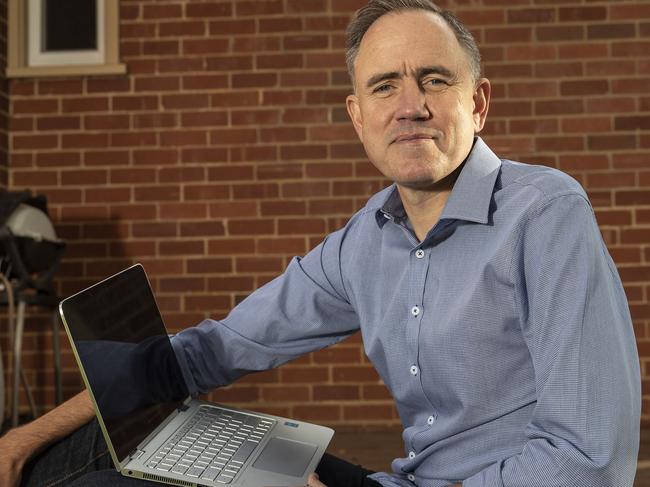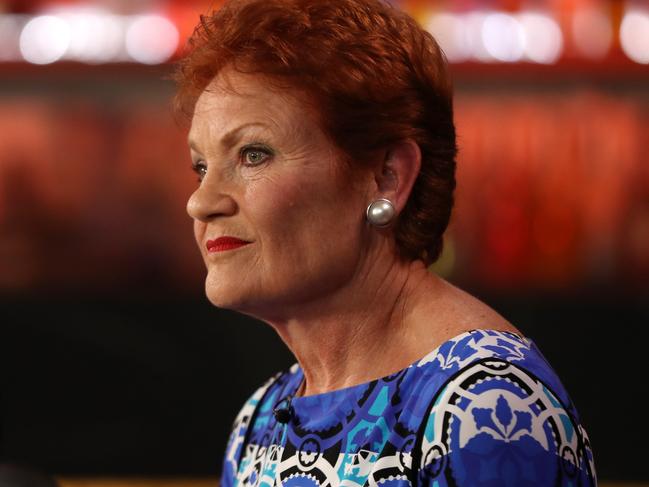Election 2022: Senate changes and what Greens seat gains mean for Anthony Albanese
Anthony Albanese will be under pressure in the Senate, where the balance of power is changing. See who may force him to go ‘further and faster’.
Federal Election
Don't miss out on the headlines from Federal Election. Followed categories will be added to My News.
Anthony Albanese will face climate pressure in the senate after a “greenslide” in the upper house led to the Greens picking up a record number of seats.
In a major shift to the left, the climate-focused party will hold a dozen seats – up from nine – after picking up spots in South Australia, NSW and also Queensland, where they have ousted outspoken anti-abortion LNP senator Amanda Stoker and One Nation’s Pauline Hanson is under threat.
It is the highest number of spots held in the senate by any minor party in Australian history, as the Coalition grapples with going from 36 senators to just 33 or even 31, which includes losing senator Eric Abetz to the Jacqui Lambie Network’s candidate Tammy Tyrrell in Tasmania.

In a major upset that will mark the first time a major party has not held an upper house seat in the ACT, Liberal senator Zed Seselja was on Sunday looking like he could lose to Wallabies great and climate advocate independent David Pocock once preferences are calculated.
Senator Seselja gave his first public statement on Facebook on Sunday, saying it was possible postal or pre-poll votes could save him.
“At this stage it is too early to determine a result for the second ACT senate seat,” he said.
“Much of the vote is yet to be counted, including significant numbers of pre-poll and postal ballots, which traditionally provide a boost to the Liberal count.”
Mr Pocock said the count so far was “encouraging” but would not call it.
Labor could keep its 26 senate count, but is an outside chance of reaching 27 or 28.
The ABC was projecting 25 seats, which is short of the magic number of 39 needed for majority in the upper house to pass legislation.

If Labor reaches 27, it will be able to form majority with the Greens, but if it doesn’t it will also need the support of someone like the progressive Mr Pocock or Jacqui Lambie.
Ben Oquist, the executive director of progressive think tank the Australia Institute, said that there had been a “fundamental shift in the dynamics of the senate” towards climate change.
He said he believed that the Coalition’s count could fall as low as 31, which would still be the highest number in the senate.
“Overall it’s clearly a climate action senate where Labor and the Greens will have at least 38 seats and could get to 39 seats, depending on the final outcome in South Australia,” he said.
Greens leader Adam Bandt vowed to use the party’s so-called “greenslide” to push Mr Albanese to move faster on net zero.
The party also want to stop new coal and gas mines.
“A record number of people have voted for the Greens and we will be in the balance of power in the senate and possibly the house,” Mr Bandt said.
“Voters have made it clear they want the Greens to push the Albanese government to go further and faster on climate change and inequality.”
Mr Pocock, who spent the morning after the election on a walk with his wife and parents, said he knew “the balance of power was up for grabs”.
He said that he didn’t think Labor’s 43 per cent emissions reduction target was ambitious enough and has openly backed Zali Steggall’s bill which includes a target of 60 per cent.
“It’s still in play and we’ll wait and see over the next few days how we’re doing, but my commitment is to Canberrans, I want to represent all of the ACT and will be looking at each piece of policy on a case-by-case basis,” he said.

Senator Hanson looks likely to hold onto her seat in Queensland where she is facing a surprising threat from the Legalise Cannabis party, which has picked up 6.7 per compared to her 7.8 per cent with a third of votes counted on Sunday afternoon.
Despite forking out $100m and leading the Queensland senate ticket for the United Australia Party, Clive Palmer will miss out on a spot, although one of his candidates looks to be possible in Melbourne, where there’s a small freedom movement after long lockdowns during the pandemic.
The senate count is more complicated than the count for the House of Representatives, with the counting of first preferences beginning on election night, but the full won’t be completed until several weeks after the election and preferences can change the outcome.
Originally published as Election 2022: Senate changes and what Greens seat gains mean for Anthony Albanese





